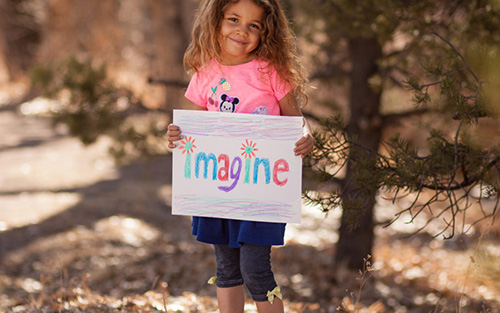The benefits of mindfulness are plentiful. According to the research on mindfulness with adults and children, mindfulness improves immune function (fewer illnesses), increases concentration, improves self-acceptance and self-esteem, strengthens resilience, helps to control anger, hyperactivity, and decrease stress.
Because our kids are more stressed than ever, they need our help by giving them tools to cope with their challenging lives. Prolonged and/or intense stress takes a toll on a child (and adult) causing anxiety, depression, acting out, physical illness, and learning issues—good reasons to mitigate stress early using a variety of forms of mindfulness.
Mindfulness creates resilience because it promotes an understanding of one’s emotions, the ability to control emotions, and a deeper sense of knowing what we are fully capable of.
The trick for parents and teachers is taking time to consciously infuse mindfulness into your day and/or evening. When you do, you will see the changes in yourself and your child—building resilience all around.
Here are some tricks for parents:
- Sit together and have a snack. Talk about the snack and its characteristics; your favorite flavor, its texture, its temperature. Really noticing what you’re eating helps you be in the moment instead of worrying about anything else. To be playful, make funny faces to show your opinion of a food, or come up with creative ideas for weird meals.
- Do a puzzle together.
- Go for a walk and talk about the trees, birds, bugs, or grass.
- Read a book together. Talk about the book and what you both thought about the story and characters.
- Ask your child about the weather inside their hearts—sunny, cloudy, bright, rainy, or stormy. Be curious about their day and its highs and lows.
- Write your Imagine stories together (go towww.theimagineproject.org).
- Play a game, anything from peek-a-boo and hide-and-go-seek to card games or board games.
- Cook together.
- Chase bubbles.
- Look at the clouds and find formations in them.
- Pick a country on the world map and research it.
- Draw, color, and create together.
- Tell a story at bedtime, real or fictional.
- Using a chime or singing bowl at bedtime, listen to the sound together until the sound is completely gone, ring it again if you’d like.
Any one of these activities needs to be your full focus for at least 15 minutes, even longer if possible; no distractions, just one-on-one attention while you are being mindful of the present moment. The above suggestions are forms of mindfulness you can do together. If your kids are up for it, you can sit quietly and listen to a meditation together (go to www.soundstrue.com), maybe someday they will do it on their own! What a great way to do something together that is peaceful and helpful.
For teachers:
- Establish daily mindfulness routines for students to become familiar with.
- Begin the day with a mindful moment. Have the students close their eyes and breathe in and out slowly to a count of 5—5 breaths while breathing in and 5 while breathing out. Ring a chime or use a singing bowl—have them listen until the sound is gone. The sound will be helpful because it’s training them to be calm while listening which will help later in the day when you need them to gather themselves and calm down.
- Take a 5-10 minute break during the day to color, do a fun yoga pose or two, or even some jumping jacks—have them notice their bodies once they are finished moving.
- Put an interesting but obscure picture up and have them write down what they see, or even draw a mirror image of the picture. Discuss all the possibilities it could be.
- Have students write an Imagine story (see theimagineproject.org for free journal downloads).
Practicing mindfulness will pay off at school, at home, in sports, even within yourself. Stress is almost impossible to get away from in our complicated world so we must show kids how to help themselves. Helping themselves creates resilience, hope, and a society of giving, caring, and successful kids and adults.
The Imagine Project, Inc., a nonprofit organization that helps kids, teens, and adults overcome challenging life circumstances through expressive writing. Dianne is a thought leader in the area of stress and trauma in children. Her simple, yet profound 7-step writing tool, now used by schools across the US, gives kids and teens the opportunity to rewrite a challenging personal story and Imagine new possibilities in its place.


